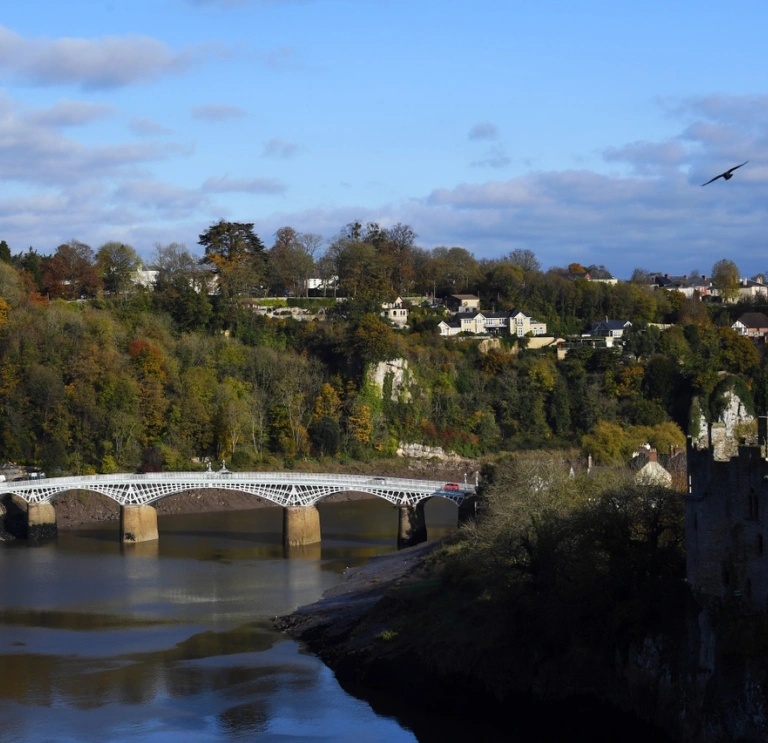Storm the castle
Chepstow’s Great Tower keep was commissioned by William the Conqueror barely a year after the Battle of Hastings, making Castell Cas-gwent (Chepstow Castle) Britain’s oldest surviving post-Roman stone castle. Three major building phases followed. Overlooking the Wye, its position was highly strategic. We don’t mind a bit if you pop across to the English side of the river – the views from there are fantastic.


Hit the high street
Chepstow, which means marketplace in Old English, is still a great place for shopping. You’ll find plenty of tempting independent boutiques amid the handsome Georgian and Victorian buildings in the centre of town. The town has also received an award-winning redevelopment, adding smart pedestrian areas decorated with stone walls and sculptures inspired by local legends.
Explore the past
On Bridge Street, near the castle, you’ll find Chepstow Museum. This substantial Georgian townhouse is packed with displays revealing the history of Chepstow and the River Wye. You’ll see photos and artefacts relating to fishing, the wine trade and shipbuilding, plus paintings by artists who toured the Wye Valley’s most romantic spots in the 18th and 19th centuries.
Walk the walls
Chepstow Port Wall, built in the 13th century, used to have a main gate with a portcullis, where toll collectors would extract taxes from anyone bringing merchandise into town. The gate that stands today is a comparative youngster at a measly 500 years old – and you can now stroll through for free, no matter what you’re carrying.

Cross the bridge
This striking Regency road bridge has carried traffic from Chepstow to Gloucestershire since 1816. With massive pillars topped by five arches of gracefully curved cast iron, it crosses one of the world’s most tidal stretches of river. Between high and low tide, the Wye can drop by almost 15 metres.

Go to church
St Mary’s Priory Church is the earliest example of Romanesque architecture in Wales. Founded in the 11th century as part of a Benedictine priory, it’s similar in age to the Norman keep of Chepstow Castle. It’s been altered over the centuries, but the intricately-decorated sandstone arch over the west door is unmistakably Norman.
Walk the Wye Valley
Walk part of the Wye Valley Walk. From Chepstow Castle car park, a 17-mile waymarked walk meanders all the way to Monmouth via the Lower Wye. You’ll travel through a landscape of wooded gorges and green riverbanks that’s both a Site of Special Scientific Interest and a National Landscape (formerly Area of Outstanding Natural Beauty). It won’t take you long to see just why this are has been attracting visitors for centuries.

Go to the races
Are you feeling lucky? Famous as the home of the Welsh National, which takes place each December, Chepstow Racecourse runs thrilling race days throughout the year. It’s also a popular venue for live music and entertainment.


Be inspired by Tintern Abbey
The romantic ruins of Tintern Abbey are less than six miles from the centre of Chepstow by bike, bus or car. Famous for inspiring the poet William Wordsworth, this ruined Cistercian Abbey is still a magical place. For the best views, head for the Offa’s Dyke Path and up to Devil’s Pulpit. According to legend, this rocky outcrop overlooking the Abbey was once used by Satan himself as he tried to tempt the monks in the valley below away from their holy duties.








